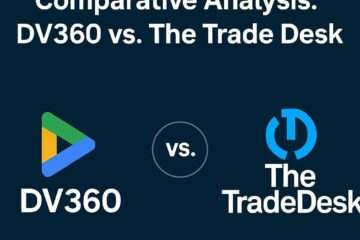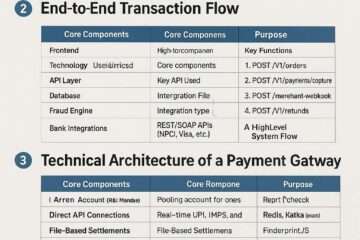

The publishers envision a successful advertising ecosystem, where the money from ads displayed on their websites is maximized. But header bidding is needed in order to make that vision a reality.
The process to make ad inventory biddable to numerous demand partners thanks to header bidding increases publishers’ ad income.
By doing away with inefficiencies like Google AdX’s (Google Ad Exchange) preferred bid position when a publisher utilizes Google’s ad server, the procedure—which entails utilizing JavaScript to build a header bidding wrapper—allows advertisers to engage in improved ad targeting.
Prepare for a thorough examination of header bidding. For good reason, it has become the ad tech industry’s buzzword. So continue reading to master header bidding and increase your ad earnings.
What do you mean by Header Bidding?
Header bidding, also known as advance bidding programmatic technique wherein publishers offer inventory before making calls to DFP Server
Header bidding, a sophisticated programmatic advertising approach, substitutes for the waterfall method by enabling publishers to simultaneously offer their ad inventory to a number of ad networks and exchanges.
In essence, header bidding is a programmatic auction in which bid requests are delivered in real time to a number of demand partners to increase the value of ad inventory.
Publishers can create bid requests using browser resources by adding a JavaScript (JS) code snippet to the head> section of their website. The publisher’s ad server filters these bids according to a set of criteria, and the highest-bidder’s advertisement is subsequently displayed on the user’s screen.
In order to increase the ad revenue for their web pages, publishers should utilize header bidding because the entire procedure just takes a few milliseconds.
What Did Exist Prior to Header Bidding?
Ad space was auctioned off and provided only after the ad placements on a webpage started to load prior to programmatic header bidding.
The publisher’s direct orders would be served first when a user visited a website since they were given the greatest priority in the ad server. The ad server would transfer the impression to the programmatic line items in a sequential “waterfall system,” a real-time auction environment, once the direct order’s frequency cap had been reached.
The fundamental drawback of the waterfall or daisy-chain approach is that the amount an impression sells for may not always be an accurate representation of its true worth. Unsold inventory, which is typically determined by size rather than the highest bidder, is offered by the top-ranked ad exchange. If no one in this group places a bid, it moves down to the second tier and remains there until someone does.
The publisher loses money since someone in the lower tier may have been willing to pay more, but they were never given the option to bid for the inventory they desired.
What’s the Process for Header Bidding?
As soon as the page loads in the user’s browser, header bidding starts. Before accessing the ad servers, the header bidding code in the page header executes and concurrently calls all demand partners to place a bid on this impression. All of this occurs within a time range chosen by the publisher, frequently within a split second.
For the purpose of determining the highest bid they send, several of these demand partners conduct auctions within this brief interval. Before the publisher’s direct inventory is called, the visitor’s browser sends the highest bid values from each partner to the publisher’s ad server.
Publishers can choose which demand sources participate in the auction by using header bidding, which allows all demand sources to bid simultaneously. Publishers can most importantly raise the prices they are asking for their premium product.
Overall yield rises with less reliance on a single supply-side platform (SSP), thanks to a higher ad fill rate and more intelligent sale of impressions to the highest bidder.
Due to the fact that it is a single auction without sequential chaining, reporting discrepancies are also decreased.
Why Publishers Should Use Header Bidding?
Greater yield is the main advantage header bidding provides to publishers. Publishers can sell inventory on a per-impression basis because header bidding enables a simultaneous auction from all the bidders.
Therefore, less reliance on a single SSP enables more intelligent impression allocation and higher fill rates.
Header bidding is beneficial for publishers for a number of other reasons as well, though.
Header Bidding for Publishers: 5 Advantages
- Enhanced Control-Which sources can take part in the bidding process is under the control of the publishers. Publishers can prioritize particular advertisers in addition to maintaining control over their sites, which encourages marketers to keep working with their preferred publishers.
- Increased Bidding-The advertisers interested in purchasing impressions on publishers’ sites might grow and diversify. Business resilience and adaptability are increased by not relying on a select group of advertising.
- Revenue Increase-Publishers can increase the number of advertisers who have access to their inventory, increasing CPMs and revenue.
- Higher Ad Quality-Advertisers who want their adverts to be seen by people from a certain publisher’s audience will place greater bids. Because of the greater competition, advertisements are of higher quality and relevance.
- Increased loading speed-The user experience and SEO outcomes are enhanced by header bidding since it reduces the time required to sell an impression and serve an advertisement on the page.





























































Excellent beat, I would like to assist you while you update your website on how to subscribe for a blog site. The account provided me with a substantial amount of assistance, although I was already somewhat acquainted with this. Your broadcast presented a clear and concise concept.
Hey, cool post There is an issue with your website in Internet Explorer; could you please check this? Because of this issue, many people will overlook your excellent article because IE is still the most used browser.
what is the issue?